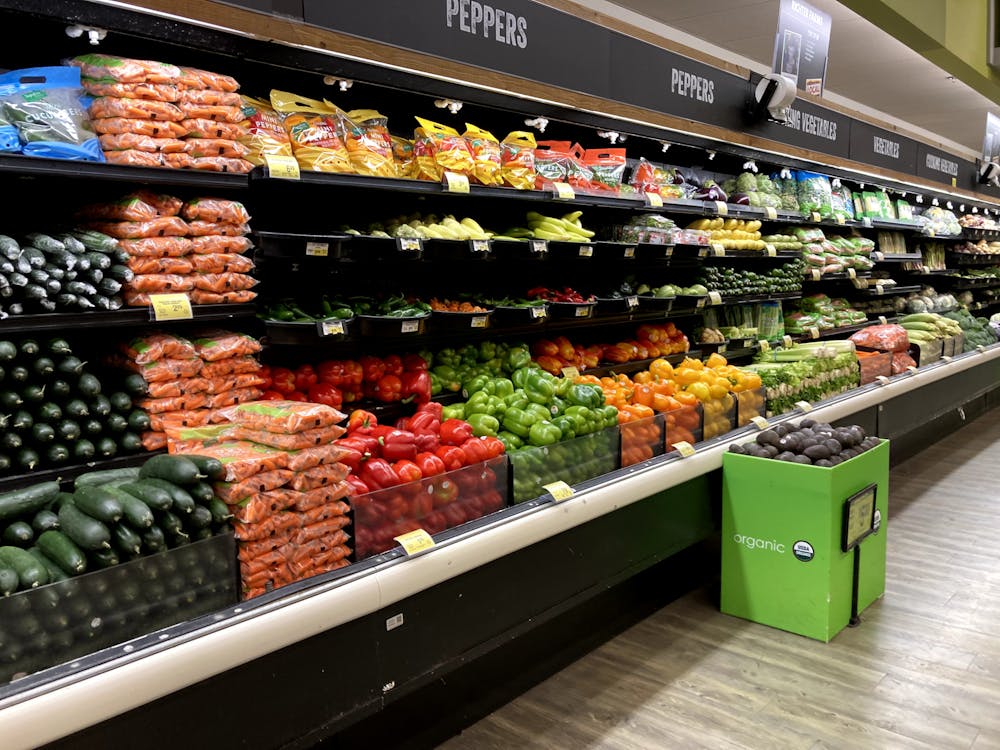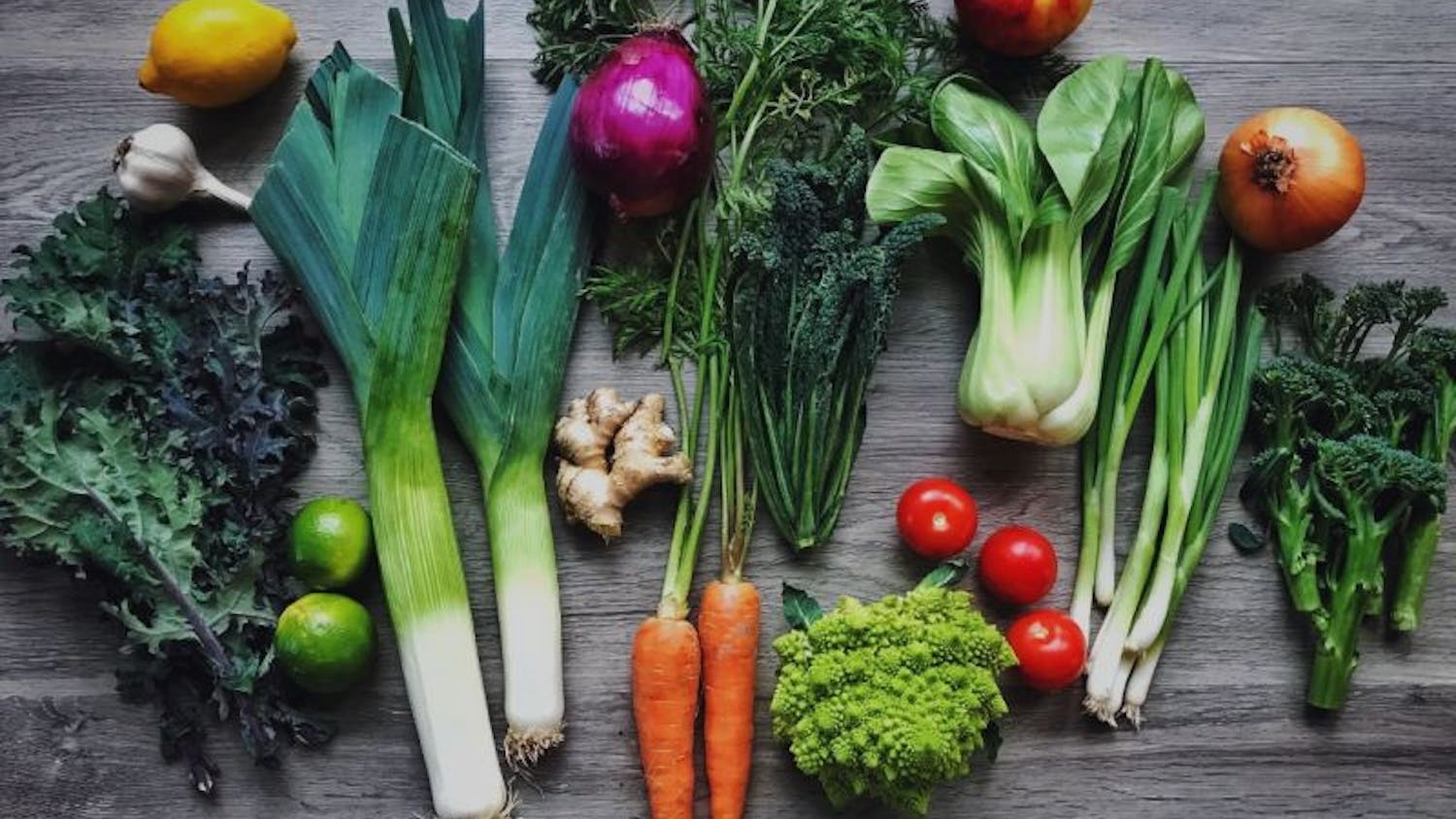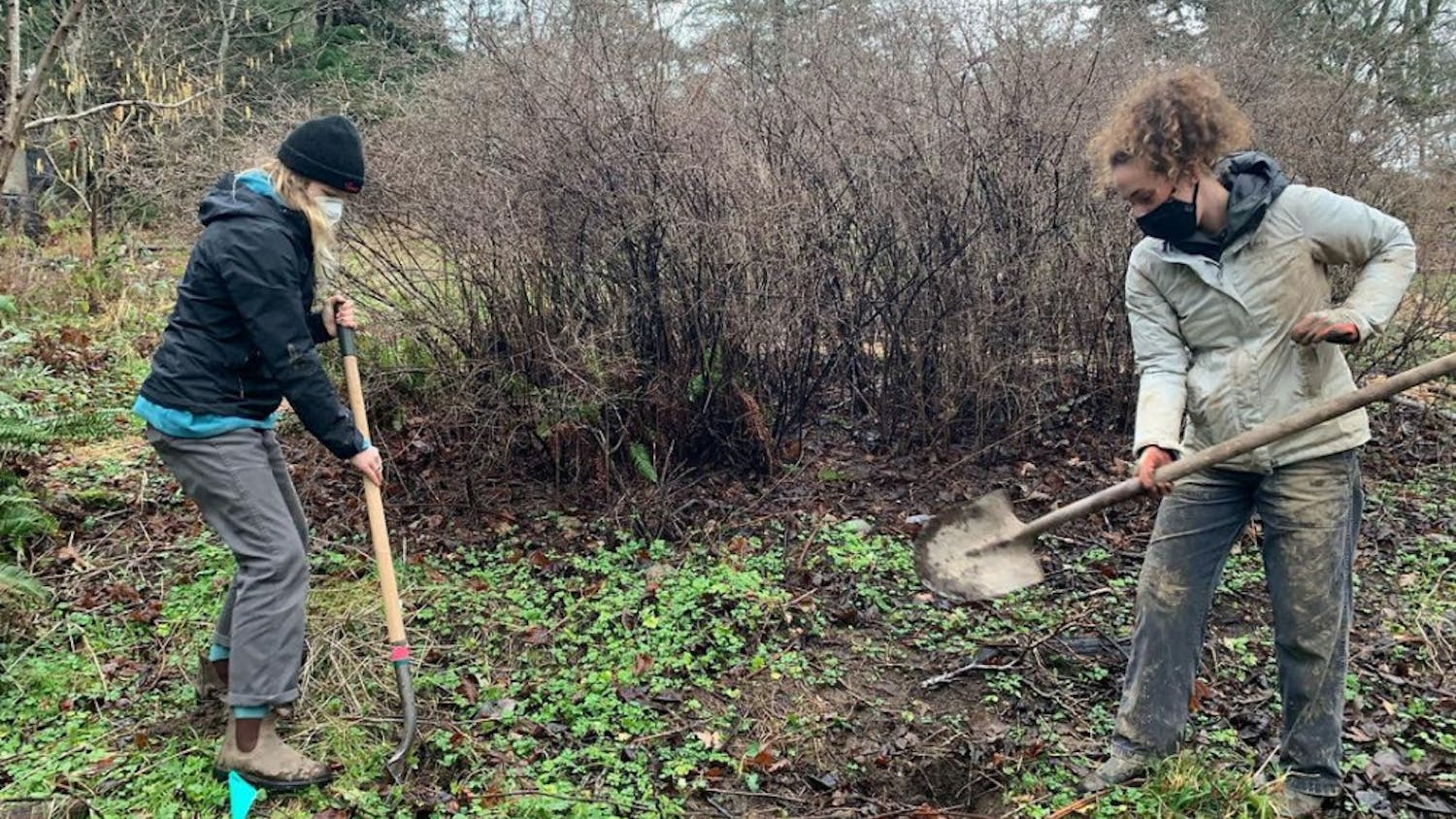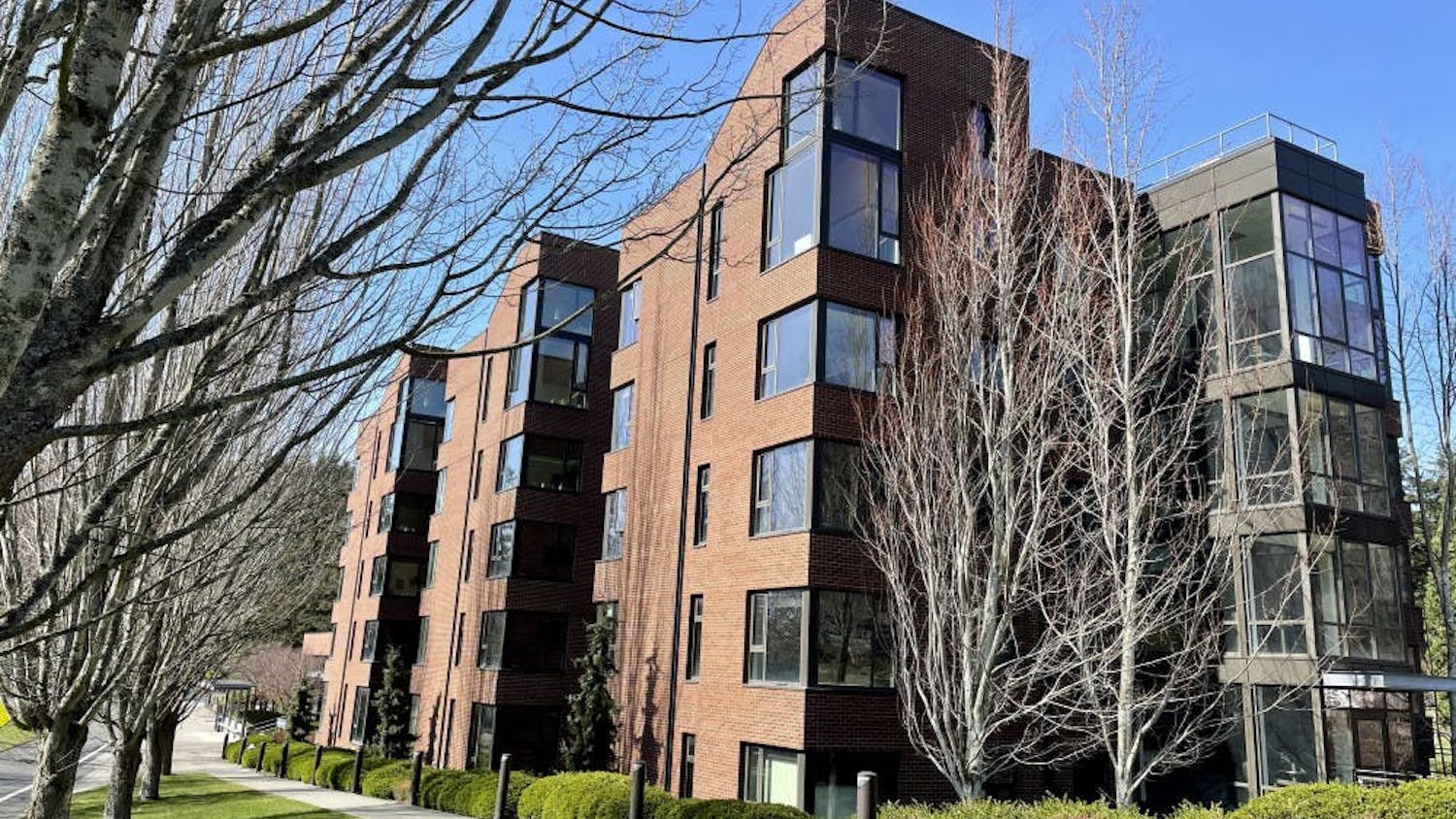As the summer of 2019 approached, fourth-year Western student Mike Oh had a decision to make: pay rent or go without groceries. With his student loans halted for the summer, Oh became strapped for cash in an increasingly costly college city.
Nationally, nearly a third of the surveyed college student population experience some form of food insecurity, according to a 2019 report. Western Washington University experiences higher than average levels of student food insecurity, according to recent undergraduate exit surveys.
While Western does not record the number of students who use their available food insecurity services, the level of food insecurity students experience shows Western’s systems struggle to navigate how to promote their services and meet student need.
These services have been found to be inaccessible for many due to the lack of adequate communication between food-insecure students and the complex systems Western employs. In addition to these difficulties, university meal prices have gradually increased since 2010, which has worsened the issue of affordability on campus.
This has been a long-standing issue with students on campus. Protest groups have raised concerns about the issues of food insecurity, inaccessibility and affordability with Aramark, Western’s current outsourced dining contractor, through past protests.
Universities across the state have tackled the issue of food insecurity on campus in varying ways, including food pantries, food redistribution services and self-operated dining systems.
David Thompson, a practitioner-researcher consultant at The Hope Center for College, Community and Justice, said the issue of student food insecurity is multifaceted.
“First and foremost, students are humans first,” Thompson said. “They're people first, always. We need to cover those basic needs because if you're not able to function as a human, as someone who is living and breathing like anyone else, you're not going to be able to succeed academically.”
While Western is attempting to expand its existing food insecurity services, it’s unclear how its changes will impact on-campus food insecurity moving forward.
What Does the Data Say?
According to an annual survey administered by Western’s Office of Institutional Effectiveness, undergraduate students are experiencing particularly high rates of food insecurity.
Questions surrounding food insecurity were first introduced into the 2016-17 survey completed by graduating students and have been included every subsequent year. The latest survey results from the 2019-20 academic year show of the 3364 students surveyed, 50.2% couldn’t afford to eat at some point in the 30 days prior to completing the survey.
The same survey also found 52% of those students were often eating less than they felt they should due to limited available funds.
Many Western students depend on financial aid to make ends meet, ranging from rent to groceries. For students like Oh, any lapse in this aid can make it difficult to sustain themselves.
“I had no money, and being able to afford food, especially when I didn't have financial aid, was definitely a struggle because I had to pay rent and that comes first,” Oh said.
Oh became dependent on various on-campus food services for months at a time following his first use in 2019 and is among hundreds of food-insecure students on Western’s campus.
Food insecurity, as defined by the United States Department of Agriculture, is the limited or uncertain availability of nutritionally adequate and safe food, or the ability to acquire such food in a socially acceptable manner.
The Hope Center for College, Community and Justice conducts research regarding food insecurity on participating college campuses. The 2019 report includes the responses of roughly 86,000 students from 123 postsecondary institutions across the United States, with 45% of respondents expressing some form of food insecurity — 12% lower than Western’s rate.
30% of participants in the Hope Center survey answered yes when asked if, in the last 30 days, they were hungry but didn’t eat due to a lack of available funds. Thompson said this is a common theme among food-insecure students.
“Some of the most common things we see are worrying about running out of food, not being able to afford balanced meals, and those meals not lasting long enough,” Thompson said. “Up until this point, it was something that they would [study] for the general population, but for college students, it wasn’t a particular focus.”
Pantries and Pop-ups
A common method of combating student food insecurity across Washington state universities is the use of student food pantries. Western’s pantry system operates under the name of the Western Hub of Living Essentials or WHOLE. It’s coordinated by the board of Associated Students and is supported by student and private donations.
The pantry, located in the Viking Union, is open seven days a week, and offers non-perishable goods, personal care products and used clothing to food-insecure students.
The WHOLE food pantry lacks many of the amenities present in other universities’ food insecurity systems, such as refrigerated storage and multiple accessible locations.
Eastern Washington University maintains a food pantry program that consists of one central pantry made up of refrigerators, shelves and freezers that can store perishable and non-perishable goods. Alongside the main pantry, there are six non-refrigerated cabinets in multiple locations, compared to the WHOLE pantry’s single, unrefrigerated location.
Brian Davenport, Director of Community Engagement at Eastern, said the number of cabinets ensures students have access to food regardless of where they are on campus.
“The nice thing about the cabinets is they're not locked,” Davenport said. “You can go get food whenever and they're open during building hours. We have one in our library that's open seven days a week. You can go get food out of that cabinet pretty much any time.”
Sharon Goodman, Director of Residential and Dining Services at Evergreen State College, said the university has supplemented its primary pantry system with a bi-monthly food bank. In collaboration with a local food bank, Evergreen is able to provide students with both perishable and nonperishable items.
Western reduced its campus operations in spring 2020 due to COVID-19, which led to the temporary closure of the WHOLE food pantry.
Karen Deysher, the coordinator for the Associated Students Student Advocacy and Identity Research Center, said in an email interview that the WHOLE food pantry is reconsidering how to meet student need.
“Operations were quite different pre-pandemic versus what was the largest collaborative effort of the Free Food Pantry,” Deysher said in an email exchange. “Now that the Viking Union is consistently open again, we are restructuring WHOLE’s operations.”
All donations have been contributed towards the weekly Free Food Pantry Pop-up, also led by Associated Student Services. Western food pop-ups have relatively limited resources, with each weekly hour-long event offering roughly 100 pre-packed meal kits on a first-come, first-serve basis to food-insecure students. According to the Western administration’s website, these kits are good for roughly one meal each.
Aramark, Western’s third-party dining service, also involves itself with the weekly food pop-up.
Stephen Wadsworth, Aramark’s residential district manager at Western, said in an email interview that the company has assisted in the distribution of roughly 2,500 pre-packaged meals since Western food pop-ups began in the Spring of 2020. Aramark has also facilitated the movement of meal swipes through Swipe Out Hunger.
Dean of Student Services Michael Sledge said Aramark’s involvement with the food pop-ups consists of buying, receiving and storing the food with donated funds.
Other Programs
Western employs several non-pantry food insecurity programs on campus, ranging from individual meal donations to community gardens that offer locally grown produce to those in need. These resources are solely funded through a combination of student and private donations.
Sledge said in an email interview that Western is unable to use state funds on food insecurity services, making it difficult to give these services direct administrative support.
“As a state-funded institution, there are significant challenges to getting food resources to students,” Sledge said. “State support can be used for programs, services, and support but not for goods, like food, to be given to individuals.”
Swipe Out Hunger, which Western introduced in the spring of 2019, is a program instituted by many universities that allows students with meal plans to donate their extra meals to food-insecure students.
How universities distribute these swipes varies from system to system, with Western choosing to convert donated meal swipes into non-perishable items for use in the WHOLE food pantry, rather than allowing food-insecure students to use the donated swipes to access Western’s dining halls. Students can donate a maximum of 20 meals per quarter to students in need.
Goodman said Evergreen uses a similar program called the Hungry Greener program where donated meals are provided as vouchers to food-insecure students for use at residential dining halls, with a two-way verification system that is intended to maintain the privacy of the food-insecure student.
Western’s Outback Farm also attempts to assist students facing food insecurity by contributing produce to both the WHOLE food pantry and campus food pop-ups, as well as allowing students to use available farm beds to develop their own gardens.
Riley Collins, operations coordinator at the Outback Farm, said that while the program attempts to assist food insecure students where they can, the farm is primarily focused on food justice and education rather than battling student food insecurity.
“Something that I would do is first give them anything possible that we have,” Collins said. “I would also point them to other resources, not only on campus and not only the pop-up but the Bellingham Food Bank.”
Western currently does not employ any food redistribution systems, which is the act of taking unused food from various campus resources and clearing it for use in their food insecurity systems. Both Eastern and Central have plans in place to redistribute unused food from their campus dining facilities and markets.
Brian Davenport, director of community engagement at Eastern, said their food redistribution system is still in its early stages, but they intend to expand it across all of their facilities in order to meet student needs.
“We have Einstein Bagels on campus, so we now get all of the bagels at the end of the day, we bag them up and freeze them,” Davenport said. “We would like to expand [food redistribution] to all of the dining locations where at the end of the day, if they have leftover food, as long as we can repackage it and get it refrigerated or frozen, we can serve it. Why throw it away when someone can eat it?”
Dean Masuccio, director of Dining Services at Central, said their recovery program allows them to take food such as the grab-and-go bags provided at their markets, and after three days, take the leftover bags and redistribute them to pantries around campus.
Western also provides Viking Free Food Credit each year, which provides funding for students in difficult financial circumstances and in need of food assistance.
Dina Murphy, assistant director at the Scholarship Center, said in an email exchange that Viking Free Food Credits are allocated by the Vice President for Enrollment and Student Services’ Office, which provides roughly $15,000 in food assistance per academic year.
These credits can go to Aux Points, which allows students to purchase food from various participating locations on-campus equal to the dollar amount awarded, or to a Board Meals Plan which allows students to have up to 25 meals per award at any dining hall on campus.
State Assistance
Western’s administration has acknowledged the university’s high levels of student food insecurity and understands that there’s room for improvement. Steps are being taken to address campus needs, primarily through the implementation of Washington state’s Supplemental Nutrition Assistance Program benefits for eligible students.
“We’ll continue to work with partners across the state at expanding our efforts in this area,” Sledge said. “Specifically, we know we can focus on helping students navigate resources like SNAP benefits, state and local resources and accessing local food banks.”
SNAP provides eligible low-income individuals with monthly benefits that are used to purchase food at participating institutions. Thompson said these benefits are an effective way for students to get access to resources that fit their lifestyle.
“SNAP says ‘Here’s the money, go where you need to shop, buy what you need,’ that kind of thing,” Thompson said. “I think more and more colleges are getting there in terms of connecting students to SNAP, but especially now with eligibility criteria so wide open for students, it’s going to make a huge difference.”
Sledge said Western is currently in the process of applying for these SNAP benefits, which includes hiring new staff dedicated to helping students navigate their resources.
“We’re hoping to have at least one staff member trained to help students apply for SNAP benefits,” Sledge said.
Wadsworth also said Western’s Housing and Dining System is in the process of applying for SNAP benefits to use during fall quarter 2021, which will expand options available to students who want a dining experience at Western but could not generally afford it.
“Our store must be open and pass a USDA inspection as part of the application process,” Wadsworth said. “The inspection ensures that we are stocking the SNAP-eligible products for purchase.”
However, SNAP isn’t a perfect solution, Thompson said.
Pre-pandemic, the program’s unclear eligibility requirements led to 57% of potentially eligible students not applying for assistance, according to a HOPE center survey on SNAP accessibility. Thompson said this number should improve, as eligibility requirements have loosened dramatically since 2020.
Student Costs
Despite the issue of student food insecurity on campus, Western’s Housing and Dining System has increased its meal plan prices over the past 10 years. Since 2010, the cost of a required meal plan at Western has increased by roughly 40%.
According to available housing and dining rates, a 125-meal plan cost $2,248 across three quarters in the 2010-11 school year when adjusted for inflation. In the 2019-20 school year, the same plan cost $4,185. Thompson said this is typical of many state-funded universities, as available state resources have decreased.
“Dining has become sort of a profit center for some institutions because of cuts to state funding,” Thompson said. “They have to make up their revenues … Depending on the pressure that they're under and the type of contract that’s set up, it can create some more of those unequal situations where maybe they don't have as much leverage to negotiate for food support.”
By comparison, the 2010-11 plan provided 150 dining dollars per quarter and the 2019-20 plan provided 214, a 42% increase. Subtracting dining dollars from the total, this is an increase from an average of roughly $6.64 per meal in 2010-11 to $10.50 in 2019-20.
Western’s current dining system is operated by Aramark, a food service company that the university has contracted with since 2011 to provide Western students with meals across all of their on-campus dining halls and markets.
Students have raised concerns about Aramark through the Shred The Contract campaign. This campaign began in 2017 and has since pushed Western to transition to a self-operated dining system due to what it sees as a lack of support for food-insecure students on campus, high amounts of food waste, a lack of nutritionally adequate food and unfair student labor practices.
As a result of the losses caused by restricted Auxiliary Enterprise services in 2020, Western extended its contract with Aramark from September 2021 to September 2023.
Western previously considered a transition to self-operated dining services in September 2019 after conducting a feasibility study. The study showed that some key advantages to a self-operated dining system included flexibility in choosing suppliers, integration with other university goals (including sustainability, affordability, and increased communication between dining and student administration), and less focus on corporate profit motives.
Masuccio said Central’s self-operated dining system allows for more program flexibility and better communication with students compared to an outsourced solution like Aramark.
“We have a lot of flexibility in partnerships on campus that we make connections with,” Masuccio said. “Student groups can come to us with ideas, and we can try new things out. We’re able to put a process in place to donate state resources to food pantries on campus to address food insecurities among students.”
The study also found that a self-operated system would lead to increased costs, with a required investment of roughly $1.4 million to make the initial transition and an estimated yearly loss of $840,000 to $1.23 million.
These costs are attributed to higher benefits paid to Western staff and increased burden on Western administration. The study also mentions that Western's reputation could suffer if they’re unable to execute the transition well.
Masuccio said Central’s self-operating system is more focused on the needs of students than their net revenues, which allows for trust to build between the system and its users.
“Another reason I believe self-operated programs work is that we are not a for-profit organization. We are here to serve our campus and our students,” Masuccio said. “Any net proceeds we re-invest into the campus and the programs.”
Communication and Moving Forward
Even when food insecurity systems are available to students, communicating that those systems are available to them is often difficult. Many students may be unaware that they are eligible to use them, or are unaware of their existence entirely.
After months of depending on on-campus food services, Western student Mike Oh found the communication between the university and its students to be lacking.
“Not many students know of the food pantries on campus, and it’s there for everyone,” Oh said. “It's there as a resource for everybody to use.”
Western is currently in the process of developing new forms of coordination between students and the administration, starting with new positions specifically designed to make navigating finances easier for those in need.
“We are currently able to fund a part-time basic needs coordinator who has access to designated state funds to assist students who are experiencing, or in danger of experiencing homelessness including some food resources,” Sledge said. “We hope to create a three-year program with some new state funding and a resource navigator position to assist students with accessing various resources.”
Expanding that communication can be trickier than advertising available systems, Thompson said. With their options often split between on-campus resources, financial aid and dining systems, food-insecure students can quickly become overwhelmed or unsure of whether their specific financial situation allows them to seek campus assistance.
“Students don’t know they’re eligible for supports that do exist, or students think that there are other students who need it more than they do,” Thompson said. “Even if they think they know that they’re eligible, they might not know that services exist.”
This lack of communication isn’t just an issue with Western’s food insecurity systems but an administrative one as well. Throughout the reporting of this story, there were significant difficulties in reaching out to Western’s available food-insecurity contacts.
Despite reaching out to many key stakeholders in the system multiple times, only a handful responded to inquiries; if they did, they would only agree to email interviews or forwarded the inquiry to Western’s Director of Communications.
Eastern takes a more proactive approach towards contacting students, using pop-up pantries as a way to both advertise and distribute food services to students.
“We would get pallets of produce, set up in the middle of campus and just give it away,” Davenport said.
Davenport said that these pop-up pantries serve two purposes: to give away food and let students know that the food pantry on campus is open for everyone.
Eastern students created the hashtag #normalizetheneed to get the word out and connect with students on social media platforms.
While communication plays a large role in food accessibility, the quality of the available food is important as well, with the USDA’s definition of food insecurity emphasizing that the food student can access needs to be nutritionally adequate.
Oh said if students aren’t eating nourishing food, it will impact their ability to perform in class.
Sledge said while Western has programs in place to combat student food insecurity, he knows there’s room for improvement at the school.
“We’ll continue to work with partners across the state at expanding our efforts in this area,” Sledge said. “Specifically, we know we can focus on helping students navigate resources like SNAP benefits, state and local resources and accessing local food banks.”
Thompson said food insecurity isn’t just a moral issue, but a financial one as well, as students drop out if their basic needs aren’t being met, harming both the student and the institution they attended.
“If students' basic needs aren’t secured, then they’re not staying enrolled, and you lose the revenue of their enrollment,” Thompson said. “Everything that’s been invested in their education up to that point, from K-12, institutional grants, federal scholarships, state scholarships, have been spent but didn’t achieve their intended outcome of graduation. You may as well have lit that money on fire and tossed it away.”









